The new Guy Maddin film Rumors recently premiered at the Cannes Film Festival, and when I heard it features Cate Blanchett, Alicia Vikander, the eminently British Charles Dance as the U.S. President, and some sort of giant brain in a dark forest…well, I began to swoon like a character in a Guy Maddin movie. Instantly, my passion for the work of this mad, obsessive, and visually distinctive Canadian auteur was reignited. If you haven’t heard of Guy Maddin, you can take this as a sort of guide to his filmography, which stretches back to the late 1980’s. Maddin ranks up there with the great Canadian guard of directors whose work carries a signature style, from David Cronenberg to Atom Egoyan. Yet, a Guy Maddin film is, perhaps, even more instantly recognizable. A mix of surrealist diary, silent era techniques, romantic delirium, expressionist horror, camp comedy, and avant-garde kink, Maddin has always been a self-proclaimed “primitive” filmmaker with deep psychological roots in his hometown, Winnipeg, Manitoba. Maddin’s work is inseparable from his Canadian-ness, from the psycho-sexual repression and Freudian deep-freeze of his upbringing in what he calls “the coldest city in the world” in his dreamy pseudo-documentary My Winnipeg.
Jean Renoir’s assertion that “a director only makes one movie in his life…then breaks it up and makes it again” may apply to no one more fully than Maddin, who fully embraces the repetition inherent in his work, while always finding some way to resurrect his impressively textured artistic impulses anew. Maddin’s stylistic voice seemed to emerge almost fully formed from the beginning, with a penchant for stories within stories exhibited in his first feature, Tales from Gimli Hospital, which he wrote with longtime screenwriting partner George Toles. That style and narrative nesting technique only becomes more amplified and adventurous over 25 years later when he begins a new collaborative phase with co-director and scribe Evan Johnson and brings us his last feature-length release (prior to Rumors), The Forbidden Room.
So, how does one find their way into the dark and excessively granular forest of Winnipeg’s prize auteur? Approaching Maddin’s oeuvre is daunting, to be sure, and the kind of long-term exposure I’ve been subjecting myself to recently may leave one in a state of poetic hysteria. So, to be clear: you’ve been warned! Amnesias, amputations, resurrections, vampirism, hypnotic desires, synchronized swimming, women skeletons, poisoned leotards, and more excessive exclamations lie ahead! What follows is my suggested path to beginning your icy, somnambulistic trek into the world of Guy Maddin.
The Heart of the World (2000)
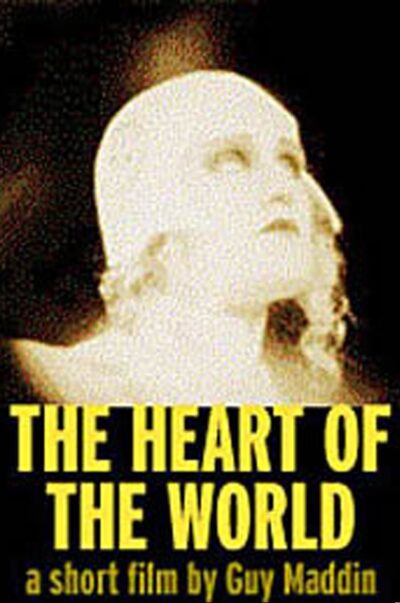
Guy Maddin has a deep bench of short films, and The Heart of the World might be not only the best of those, but possibly the best of his entire filmography. That may sound hyperbolic, but keep in mind that the film was commissioned in 2000 as an introductory short film celebrating the Toronto International Film Festival (shorts by the aforementioned Cronenberg and Egoyan were included as well). What was intended as a mere bookend became one of the most acclaimed films among all entries at that year’s festival. The film is a sort of allegory in the style of Kuleshov-era Russian montage, and the story involves state scientist Anna, dueling lovers (a repeating Guy Maddin trope) vying for her affection, and an evil capitalist caricature who would just as soon greedily smother the “heart of the world”…which is, of course, KINO!
While there are many great Guy Maddin shorts to recommend—primary among them Isabella Rossellini’s ode to her father, My Dad Is 100 Years Old from 2005, and the excessive giddiness and homo-erotic camp of 2004’s Sissy Boy Slap Party—the lightning pace and driving score of The Heart of the World is the most purely concentrated example of Maddin’s particular artistic gift, especially when it comes to his penchant for hyper-spliced editing and thrilling scores.
Careful (1992)
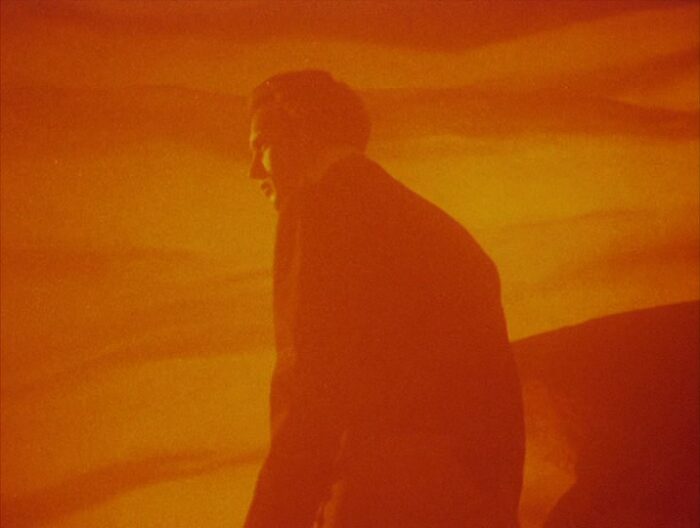
If The Heart of the World‘s celebration of the cinematic doesn’t set you alight for more Maddin, then you may want to turn back now. From the dying heart below to the mountains above, the lurking destruction in Careful is the potential avalanche that could bury the isolated Alpine village of Tolzbad, where silence is a mandatory mode of survival. This project began as an homage to mountain films in the vein of Leni Riefenstahl (though Guy Maddin claims he had never seen them and was building off of what he imagined them to be like), but what emerges is Maddin’s captivating use of color in contrast to his previous features, 1988’s Tales From Gimli Hospital and Archangel from 1990. Particularly, his painterly use of color tinting evokes one of the greatest of all silent era films, F.W. Murnau’s Nosferatu. In fact, the second half of Careful verges into his recurring vampire motifs, as Maddin regular Kyle McCoullogh (Grigorss) journeys up the unholy mountain to discover the mysterious Count Knotkers who keeps a watchful eye on Tolzbad from on high.
Typical of Maddin, the Oedipal tensions are more prominent than the actual horror elements, but vampiric imagery persists throughout his films, manifesting later as his mother in Brand Upon the Brain!, and becoming the primary focus in a film that just missed this list, a 2002 ballet version of Bram Stoker’s classic tale featuring the Winnipeg Royal Ballet, Dracula: Pages From a Virgin’s Diary. While Gimli, Archangel, and Careful all feel of a piece and feature some of the greatest intertitle cards in cinema history (e.g. “Strangled by an intestine!”), by the time Guy Maddin made Careful, his language of irises, rear projections, overlays, theatrical sets and gobos, miniatures, manic montage, textural contrasts, and Vaseline-smeared lenses was reaching a new zenith.
The Saddest Music in the World (2003)
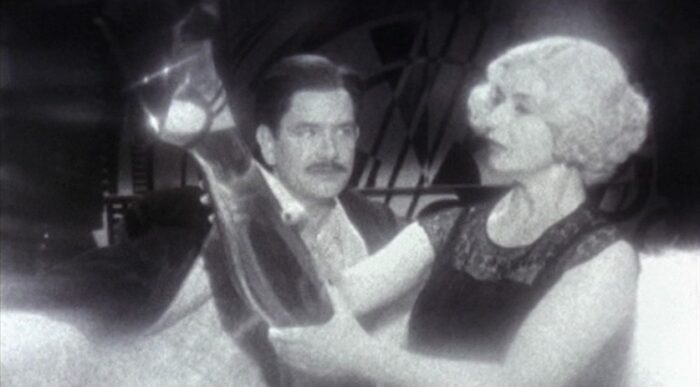
The first film of Maddin’s to feature a marketable ensemble cast, including Kids in the Hall member Mark McKinney, Isabella Rossellini, and Maria de Medeiros, this is the film that broke Maddin to a wider audience. It’s also the film I first remember seeing of Maddin’s, back when it opened (appropriately, I guess) at The Music Box Theatre in Chicago. Back then, I thought of the film simply as an homage to the silent era, without realizing that Maddin’s films are more specifically interested in confounding that transitional space between the silent and sound era. Looking at it now, it’s remarkable to me how easily The Saddest Music in the World could exist in some alternate universe as a Kids in the Hall movie (a la Brain Candy), were it not for Maddin’s signature obsession with the aesthetics of that era.
The story involves a contest in Depression-era (you guessed it!) Winnipeg concocted by the tragically legless matriarch and beer maven Lady Port Huntley (Rossellini) to determine which country produces the most morose melodies. The supporting cast includes a memorable turn by David Fox as patriarch Fyodor Kent (evoking a sort of delirious inversion of Darren McGavin in A Christmas Story!?) the man who accidentally amputated the legs of Lady Port Huntley and now longs to present her with hand-crafted glass gams filled with Canadian beer. The various band skirmishes and the cleverly intertwined compositions are a highlight, hilariously refereed by the repetitive sound of a high school gymnasium scoreboard buzzer, followed by the winner of each round triumphantly plunging down a long slide into a vat of Port Huntley suds.
The “Me” Trilogy – Cowards Bend the Knee or The Blue Hands (2003), Brand Upon the Brain! (2005), My Winnipeg (2007):
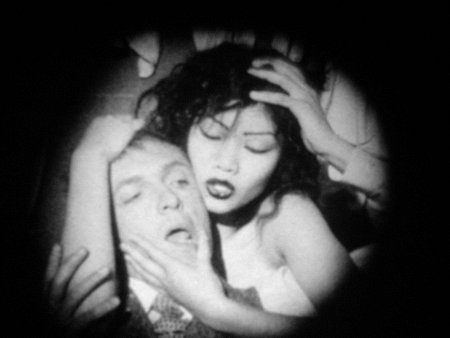
A cheat, to be sure, but this trilogy makes up the essential autobiographical, experimental core of Maddin’s work, and might be best watched in quick succession. Cowards is more like a long short at just a little over an hour, and takes inspiration from another of the most prominent silent-era influences on Maddin, Robert Wiene. It’s a bit like The Hands of Orlac with more hockey. And, like Weine’s defining work of German expressionism The Cabinet of Dr. Caligari, Maddin’s aesthetic is one that is noticeably artificial, constructed on site, sometimes at home and sometimes in vast abandoned factories. The exterior scenes to come in Brand Upon the Brain! that depict a young Guy on the cold beaches of Winnipeg are almost jarring by comparison to the consistently hand-crafted interiors that dominate Cowards and most of his early films.
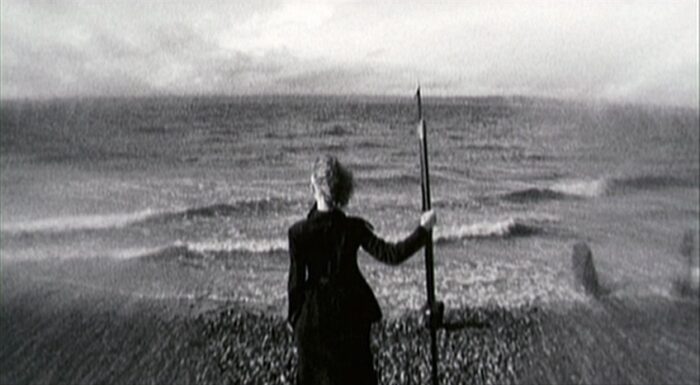
Aside from actual exterior shots, the most notable aspect of Brand Upon the Brain!, the second film in the “Me” Trilogy, is the way the film was initially presented. The theatrical spectacle was only presented in select theaters, with a live 11-piece orchestral score, a team of foley artists, an appearance by Canadian castrato vocalist Dov Houle, and a variety of guest narrators including Isabella Rossellini, Laurie Anderson, John Ashbery, Crispin Glover, Eli Wallach, Maddin regular Louis Negin, and Maddin himself (subsequently, all performance tracks were collected on the Criterion Collection release of the film). I was fortunate enough to see this Brand presentation live with narration by Crispin Glover, and will never forget his repetitive cries in ode to a Romania-shaped birthmark in the film, nor the incredible contrast of fandom on display before the show outside of The Music Box (once again) between the confounded gazes on the stream of Cubs fans headed for Wrigley Stadium and my fellow Maddin devotees staring up with anticipation at a marquee that read: “Crispin Glover Live.”
Like Cowards, Brand Upon the Brain! is particularly engaged with depicting the uneasy and unstable quality of memory, and the disjointed elements coming together to create a whole add to this quality. Maddin’s visual play with memory is refined across these two films through a sort of jittery editing, the quick play of fast-forwards and rewinds within shots becoming more prominent and specific in his visual style. Story-wise, the film is a combination of a queer Hardy Boys/Nancy Drew tale and Edward Dein’s The Leech Woman, with Guy’s mother figure manifested as an omniscient lighthouse keeper feeding on the life essence of a wild colony of orphans.
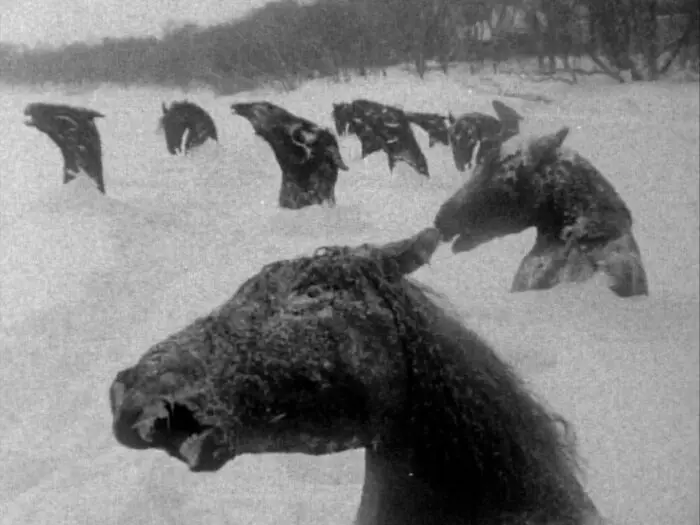
For the final film in the “Me” Trilogy, My Winnipeg, Maddin casts one of the most iconic actors in all film noir as the mother figure: Ann Savage. If it hasn’t been clear up until this point, Maddin has more than a few ‘mommy issues,” and it would be hard to accentuate that more than giving her role to the woman who played the most memorably hectoring and deliciously shrill femme fatale ever committed to celluloid, Vera from the 1945 Edgar G. Ulmer poverty row quickie Detour.
While part of the point here is delving into directors with an unmistakable aesthetic, it’s important to note how effectively Maddin evolves within his own stylistic framework film to film, with My Winnipeg marking his foray into experimental documentary via auto-ethnography. All of this comes from a deeply surrealist place, with the character of Guy dreaming the entire film from a careening, sleepy locomotive that will never find a track out of the city. Maddin is forever tied to the place of his birth, frozen in place like the horses of Winnipeg that tried to flee a burning barn only to become frozen in the river, their heads curving up at horrified angles from the ice. The heads of those frozen horses are one of the most arresting sights in all of Maddin’s visually verbose filmography, and My Winnipeg is, perhaps, his most poetic triumph.
The Forbidden Room (2015)

Finally, we arrive at the most fantastical and phantasmagoric Guy Maddin experiment yet. This film may not be the best launching pad for a journey into Maddin madness, so it serves as the final stop on our journey. But for those, like me, who delight at the delicate craft of narrative fragmentation and pure cinema experimentation, The Forbidden Room might emerge as a favorite. Maddin and Johnson built The Forbidden Room out of an online project called Seances, a website that randomly assembles unique recombinant versions of your very own Guy Maddin/Evan Johnson movies, each fitted with a unique title (I still recall mine from 2016 was called Ardently the Windmills Sulk). The Forbidden Room is the “frozen” version of Seances, so to speak. It features another unique ensemble, including Udo Kier, Mathieu Amalric, Charlotte Rampling, Geraldine Chaplin, and Elina Löwensohn. A new element of the visual lexicon of Maddin is added, as well, in the continually shifting and bubbling textural quality that is truly unlike anything I’ve seen, almost as if the film is threatening to bubble up and burn through at each careening turn into the next story.
Guy Maddin and Evan Johnson have mentioned in interviews that they purchased some of the key literature on narrative structure prior to starting The Forbidden Room, including Robert McKee’s “Story: Substance, Structure, Style and the Principles of Screenwriting,” but just didn’t get around to reading them. All the better, since this one takes a fully pleasurable dive into an almost entirely visual realm. To summarize the “story,” in fact, would be a fool’s errand, but the entire affair is framed by a tutorial about baths and bathing from an open-robed Louis Negron, and quickly takes an ever-spiraling, continually morphing passage through submarine peril, damsels rescued by lumberjacks, volcanic sacrifices, Janus-faced obsessions, and, eventually, a military attack on a giant brain…the visual link that brings us back around to the upcoming Rumors.
The credit sequence for The Forbidden Room is a perfect jumping off point to end this guide to Guy Maddin, with each credit frame listing the cast and crew appearing as if it were styled for an entirely different film from the last. This credit sequence perfectly characterizes the film and its overall effect of feeling like a dozen films blended into a single, perfect concoction. Similarly, Maddin’s entire body of work seems concocted from an endless barrage of varied visual influences, the ghosts of kino’s past whispering relentlessly in his ear: Luis Bunuel, Fritz Lang, Kenneth Anger, Lon Chaney, Rouben Mamoulian, Sergei Eisenstein, Jack Smith, Maya Deren, Todd Browning, Jean Vigo, James Whale, Busby Berkely, Josef von Sternberg, and the Kuchar Brothers, just for starters.
As we come to the end of our journey, I would point you to some of the more rarely recognized Maddin features like his colorful fantasia Twilight of the Ice Nymphs, the Homeric gangster-inspired film Keyhole, or Maddin and Johnson’s collage-based, Negativland-esque version of Hitchcock’s Vertigo, The Green Fog. Also, the music composed for Maddin’s films contains some remarkable pieces, particularly the Jason Staczek scores for Brand Upon the Brain! and Keyhole. Furthermore, there’s still countless short films to discover! Alas, from here you’re on your own. But, be careful on this delirious journey, lest ye swoon or be dispatched by wounds innumerable!



